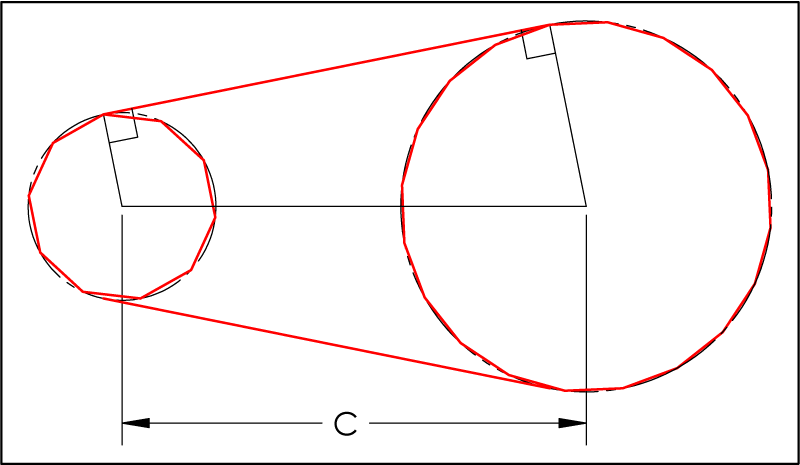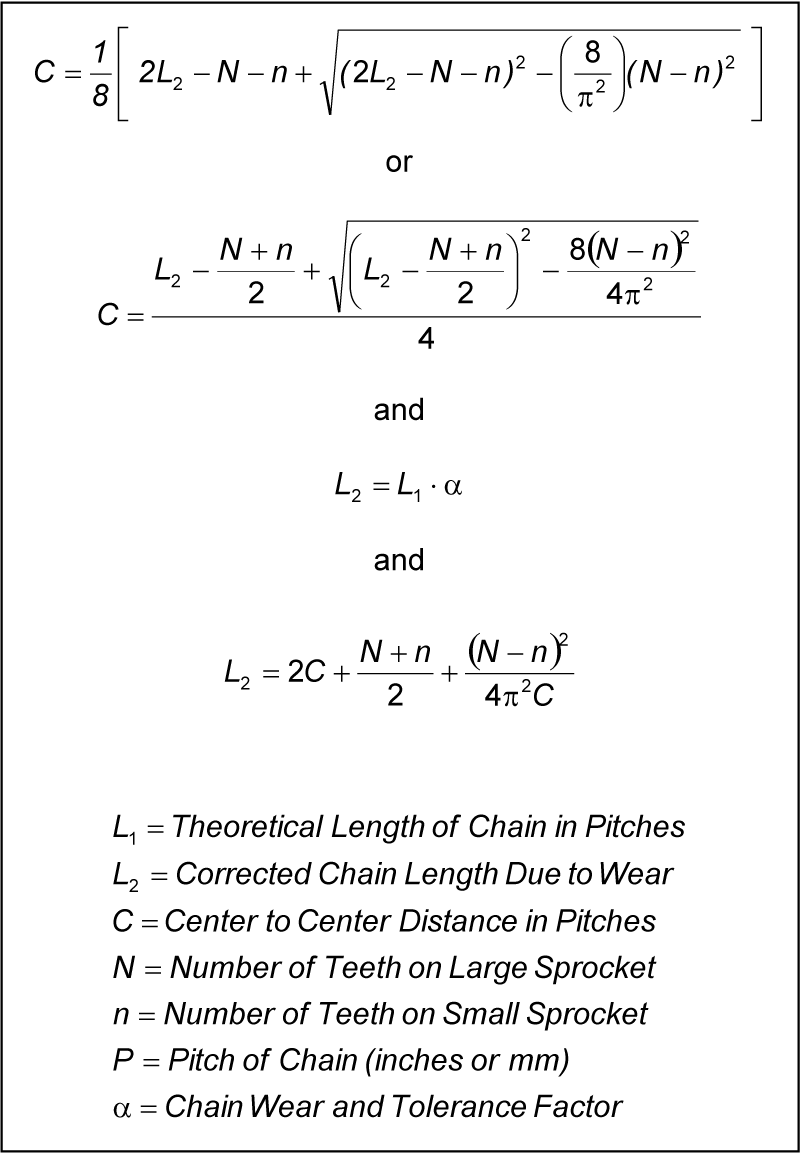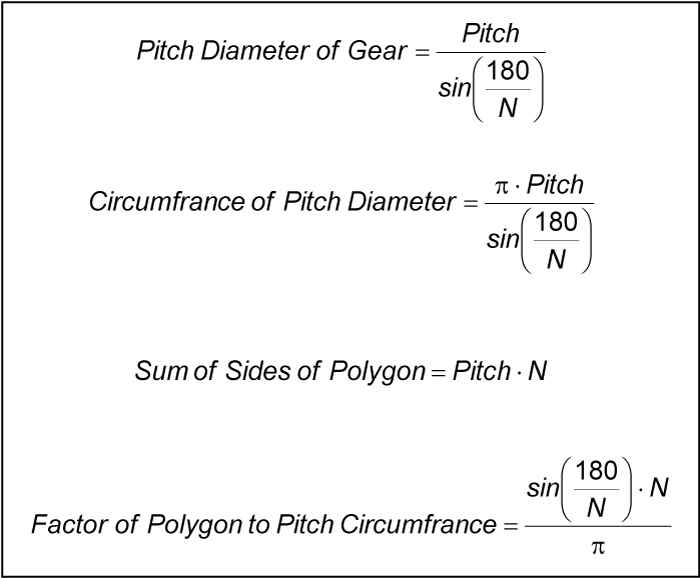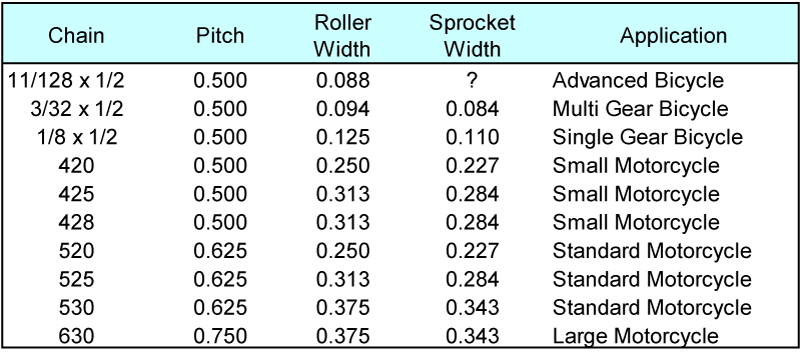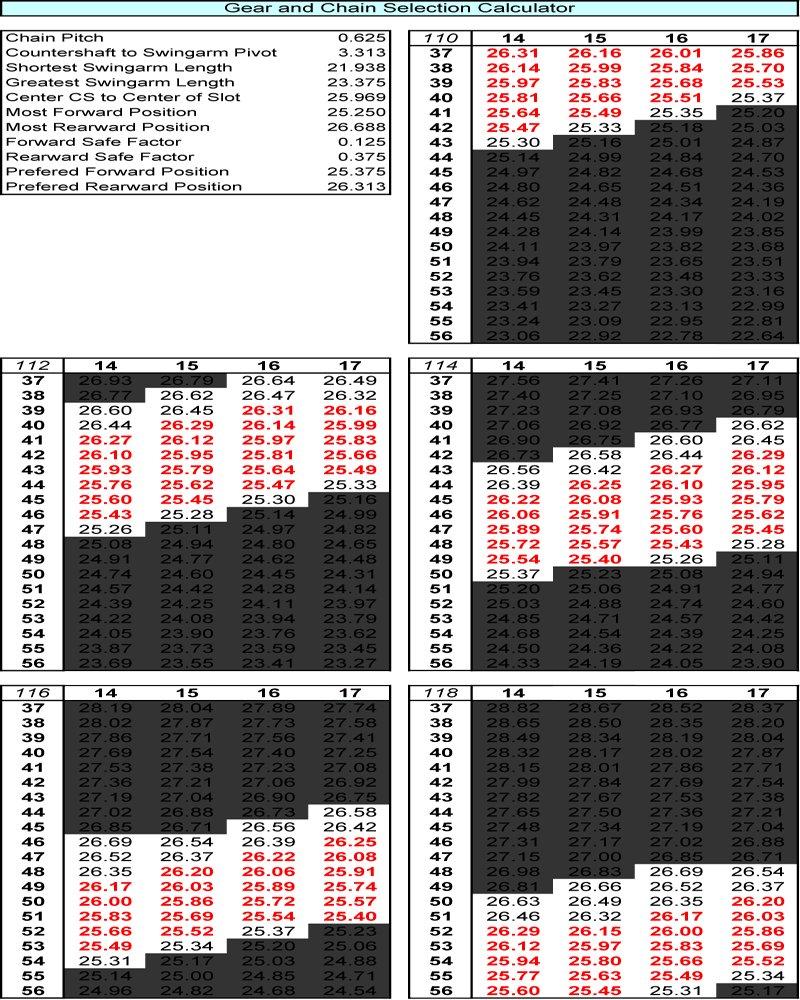Difference between revisions of "Chain Length Calculation"
From Pvdwiki
(→For Single Speed Mountain Bikes) |
(→For Single Speed Mountain Bikes) |
||
| Line 29: | Line 29: | ||
[[Image:Center-to-center-table.png]] | [[Image:Center-to-center-table.png]] | ||
| − | + | ==For Single Speed Mountain Bikes== | |
[[Image:Gear-choice-histogram-possible.gif]] | [[Image:Gear-choice-histogram-possible.gif]] | ||
| Line 36: | Line 36: | ||
[[Image:Bicycle-Magic.gif]] | [[Image:Bicycle-Magic.gif]] | ||
| + | ==See Also== | ||
| + | http://www.gearingcommander.com/ | ||
[[Category:Motorcycle]] | [[Category:Motorcycle]] | ||
Revision as of 11:15, 29 January 2008
Contents
Understanding the Problem
A chainwheel is not round. Rather, it is a polygon with facet lenth of the chain pitch. The chain leaves the chainwheel, at maximum, tangent to the pitch diameter. The chain then travels in a (theoretically) straight line to the other chainwheel, meeting it in a similar fashion.
This makes for some interesting math.
The most accurate math
Some Approximations
I'm not a big fan of approximations. Spreadsheets exist for a reason.
I will add some though, just for comparison.
Some Data
Considerations for Motorcycles (Simple Swingarm)
For Single Speed Mountain Bikes
Theoretical center distance. Alfa = 1. For a good chain alfa can be in the range of 1.001 and 1.005.

